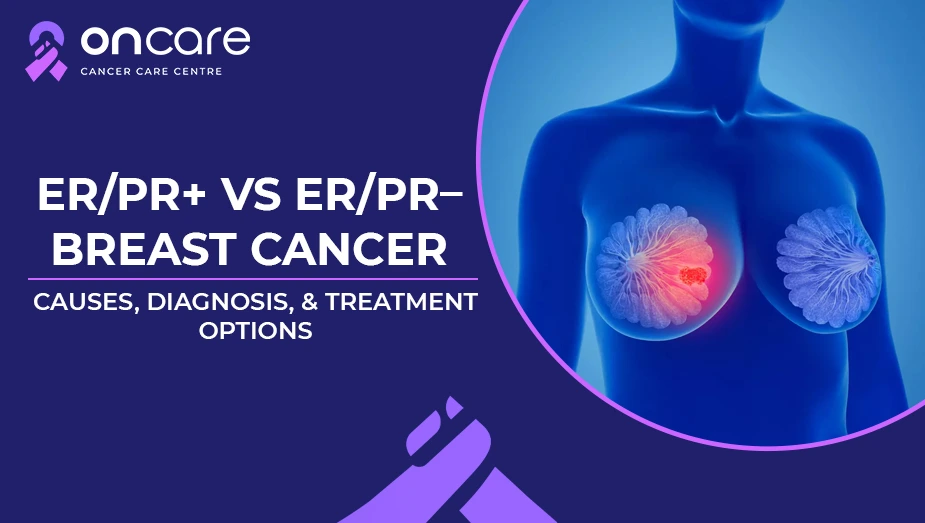Table of Contents
Subungual Melanoma Treatment: Surgical and Non-Surgical Options

Subungual melanoma is a rare and complex form of cancer that generally develops under the nail. Although these types of cancers are less common when compared to other types of melanoma, it can especially be challenging to diagnose and treat because of its location and subtle representation of symptoms.
In this blog, we’ll break down the different treatment options like surgical and non-surgical options, and how these treatment options help the patients manage these diseases.
What is Subungual Melanoma?
Subungual melanoma is a type of melanoma that develops in the nail bed, typically under the patient’s fingernails and toenails. These often appeared as dark, irregularly shaped spots mistaken for a bruise or fungal infection in the nails. In most cases, people will ignore or overlook these signs as subtle appearances, making early detection often crucial for improving the treatment outcomes.
The real cause of subungual melanoma is not fully understood, but like any other types of melanoma, it is thought to be related to DNA damage often caused by genetic mutations, family history of subungual melanoma, people above the age of 50. Additionally, there are some risk factors that cause these cancers which may include race, ethnicity, trauma, and weakened immune system.
Symptoms of Subungual Melanoma?
The most common symptom of subungual melanoma is discolored lines that appear on the nail. It generally appears as brown or black and runs from top to bottom (vertical). In some cases, the line can be irregularly shaped and increase in length and width over time.
Here are some of the symptoms of Subungual Melanoma, including:
- Split, crack, or deformation in the nails
- Experiencing an irregular pigmentation (discoloration)
- Swellings or inflamed
- Nails lift away from the nail bed
- Develop an ulcer or nodule or start to bleed
- Discoloration in the skin or around the nail
Early detection of this cancer is highly crucial to improving the prognosis, as it can often go unnoticed until it reaches an advanced stage of cancer.
Treatment options for Subungual Melanoma?
Treatments for subungual melanoma generally involve a combination of surgical and non-surgical treatment approaches, mainly depending on the stage of the melanoma and the patient’s overall health.
Surgical procedures:
Surgery is the first line of treatment for these types of melanoma, especially used for the early stages of cancer. The main goal of this treatment is to remove the melanoma and prevent the spread of the cancer from spreading to the other parts of the body. Performing surgery on patients mainly depends on the stage and location of the melanoma.
Nail excision
In early-stage subungual melanoma, the most common treatment involves the removal of the affected nail and the tissue underneath it.
The surgical procedure might involve:
- First of all, a local anesthetic will be given.
- Excision of the nail along with the surrounding tissue, which includes the nail bed as well, to ensure that the melanoma will be completely removed.
- In case the melanoma is localized and has not spread to surrounding tissues or lymph nodes, this procedure is often considered curative. While in some cases, your medical team suggests getting a skin graft might be required to cover the exposed nail bed.
Wide local excision (WLE)
If the melanoma has spread beyond the nail bed to the surrounding tissues, then a more extensive procedure such as wide local excision is performed on patients. These procedures require removing a large area of tissue around the melanoma to make sure that all the cancer cells are excised. The margin of healthy tissue surrounding the tumor is essential to reduce the risk of recurrence.
Lymph node dissection
If your healthcare provider suspects that you have a melanoma that has spread to nearby lymph nodes, tissues, and procedures often known as a lymph node biopsy might be performed. Lymph node dissection often involves the removal of the affected lymph nodes for further medical examination. This treatment typically involves when the melanoma has reached an advanced stage of cancer.
Non-surgical treatment outcomes
While surgery is the main cornerstone for this type of cancer treatment, there are some other non-surgical treatment options available for patients who may not be suitable for surgery or for those taking additional cancer treatments.
Some of these treatments may include:
Immunotherapy
Immunotherapy is an effective treatment that works by stimulating the body’s immune system to fight against cancer cells. It is primarily used for advanced cancer cases, where the cancer has spread to other parts of the body, such as metastatic melanoma.
There are drugs such as checkpoint inhibitors (e.g., pembrolizumab and nivolumab) that can be effective in treating melanoma by blocking the proteins that prevent the immune system from attacking cancer cells.
Targeted therapy
For people with specific genetic mutations, targeted therapy is often used as an effective treatment option. Targeted drugs, such as BRAF inhibitors (e.g., vemurafenib, debrafenib), target and block the mutations responsible for the growth of melanoma cells. These treatments are typically used for patients when melanoma tests positive for the BRAF gene mutation, which is quite possible in all melanoma cases.
Radiation therapy
Radiation therapy is often used with a combination of surgery, especially for patients with larger or more invasive subungual melanoma tumors. In some patients, radiation may be used to shrink tumors before surgery. These treatments are often used after surgery to target any remaining cancerous cells in the surrounding tissues.
Radiation therapy is often used for palliative care in patients with metastatic melanoma to relieve pain and other symptoms caused by the spread of the cancer.
Chemotherapy
Chemotherapy is less commonly used for melanoma than in other cancers; chemotherapy is a last treatment option for patients with advanced melanoma when immunotherapy and targeted therapies may not have been effective. While chemotherapy drugs are designed to kill and destroy, a range of potential side effects exist. These treatments are typically used when other therapies may not have been effective in subungual melanoma cases.
Post-Treatment and Follow-Up Care
After undergoing several treatments for these melanoma cases, it’s essential for patients to engage in ongoing follow-up care to observe for any signs of recurrence or metastasis.
While the follow-up care often involves:
- Regular skin examination: Usually a dermatologist will monitor the skin and nails to examine any types of suspicious lesion growths.
- Lymph node evaluation: Doctors also assess the lymph nodes to examine the cancer spread in suspected patients.
- Imaging tests: Some of these tests may include CT scan, MRIs, or PET scans to monitor for any distant metastasis, especially in advanced cases.
- Emotional and mental support: If you are recently diagnosed with this cancer, then it can be mentally and emotionally challenging, and many patients often benefit from receiving counseling and support groups.
Consult Today
Subungual melanoma is a rare and complex form of melanoma that requires an immediate diagnosis and treatment. While other surgical options might include nail excision and wide local excision, which remain the most common and effective treatments, there might also be non-surgical treatments such as immunotherapy, targeted therapy, and radiation therapy, which play a key role in managing the advanced or metastatic cancer disease.
At Oncare, we offer premium- quality cancer treatments, including advanced cancer surgeries at an affordable price range with an experienced cancer specialist consultation.
If you or any loved ones of yours are diagnosed with cancer, then visit Oncare Cancer Center and book an appointment with our experienced cancer specialist today! Get an estimated cost of your cancer treatments today!
Frequently Asked Questions
Subungual melanomas are completely rare and account for 0.7% to 3.5% of all melanomas across the world.
Here are some of the symptoms of subungual melanoma, including:
- Experiencing a split, crack or deformation in the nails
- Experiencing an irregular pigment
- Swelling or inflammation
- Developing an ulcer, nodule which starts to bleed
- Discoloration of the skin around the nail
Here are some of the risk factors associated to increase the risk of this cancer, including:
- Having a darker skin/ tone
- Having a personal history of melanoma
- Being older than 50 years
Book an Appointment
Related Blogs

ER/PR+ vs ER/PR– Breast Cancer: Causes, Diagnosis, and Treatment Options
Discover more about ER/PR+ vs. ER/PR– breast cancer, why these types of cancers matter in cancer diagnosis and its treatments, and why hormone receptors matter!

Stage 3 Cancer Treatment: Options, Procedures, and Recovery
Discover more about stage 3 cancer treatment and what to expect during treatments and its recovery and life after cancer treatments, outlook, and hope for stage 3!

Lung Cancer Treatment in India: Cost, Hospitals, and Availability
Explore lung cancer treatment in India, including cost, top hospitals, and modern therapies like chemotherapy, targeted, and immunotherapy for better recovery.

Uterine Cancer Treatment: Surgery, Radiation, and Medication
Explore effective uterine cancer treatment options, including surgery, radiation therapy, and medications. Learn what to expect and how each treatment works.

